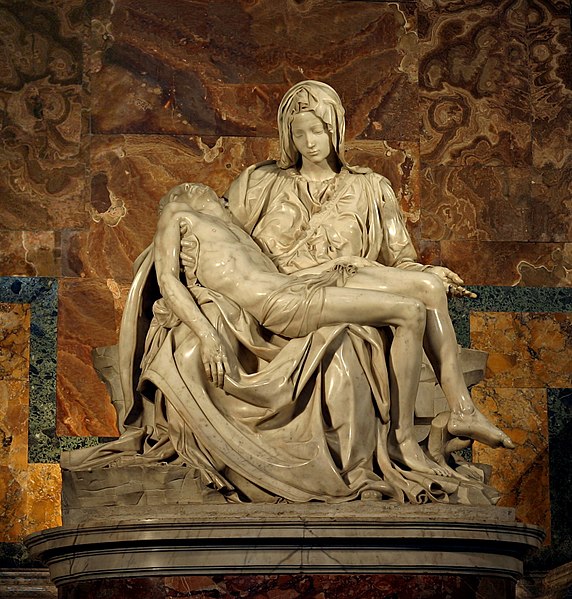Pietro Torrigiano was an Italian Renaissance sculptor from Florence, who had to flee the city after breaking Michelangelo's nose. He then worked abroad, and died in prison in Spain. He was important in introducing Renaissance art to England, but his career was adversely affected by his violent temperament.
Sculpture of Saint Jerome in Museum of Fine Arts of Seville
Mater Dolorosa, Rijksmuseum
Terracotta bust of Henry VII made by Torrigiano
Henry VII's Tomb, Westminster Abbey
Michelangelo di Lodovico Buonarroti Simoni, known mononymously as Michelangelo, was an Italian sculptor, painter, architect, and poet of the High Renaissance. Born in the Republic of Florence, his work was inspired by models from classical antiquity and had a lasting influence on Western art. Michelangelo's creative abilities and mastery in a range of artistic arenas define him as an archetypal Renaissance man, along with his rival and elder contemporary, Leonardo da Vinci. Given the sheer volume of surviving correspondence, sketches, and reminiscences, Michelangelo is one of the best-documented artists of the 16th century. He was lauded by contemporary biographers as the most accomplished artist of his era.
Portrait by Daniele da Volterra, c. 1545
The Madonna of the Stairs (1490–1492), Michelangelo's earliest known work in marble
Pietà, St Peter's Basilica (1498–1499)
David, completed by Michelangelo in 1504, is one of the most renowned works of the Renaissance.








